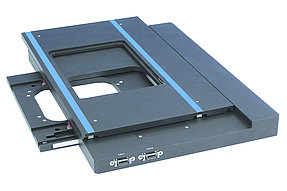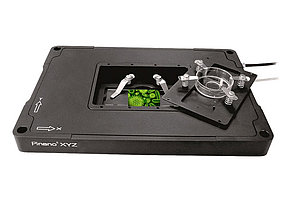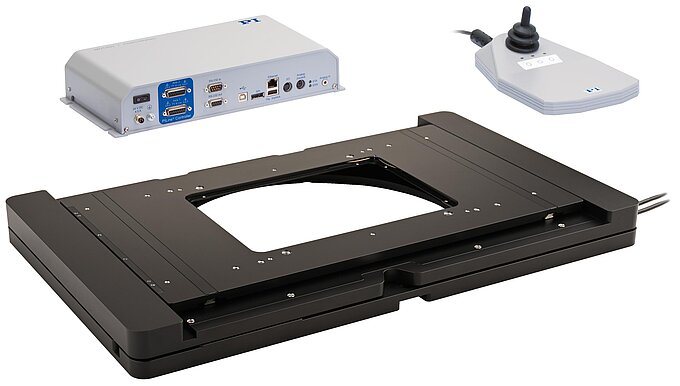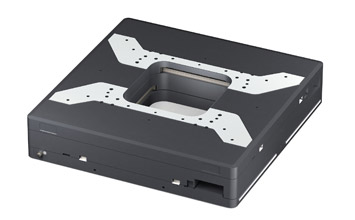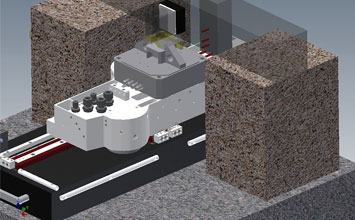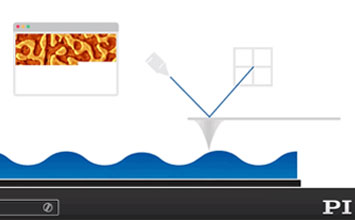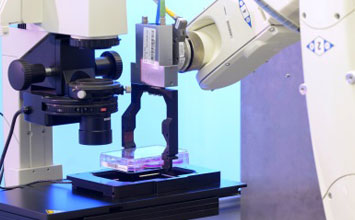Microscope Stage Provides High Precision and Speed, Low Profile
XY Microscope Stage for Microscope Automation and Metrology
Microscope stages are essential for test and production in applications including life sciences, medical technology, semiconductor engineering, and surface metrology. This group of low profile motorized XY microscope stages is designed for automation of positioning processes in microscopy and metrology. The form factor of these stages is optimized for a low-profile height as low as 27 mm, footprint and mounting pattern fit directly together with microscopes and many PI standard nanopositioning systems. Travel ranges of more than 100mm are available in the U-781 low profile XY microscope stage.
Specifications for Low Profile XY Stages:
- Automation Stages with High Precision and High Stability
- Integrated Closed-Loop PILine® Ultrasonic Piezomotor Drives Provide High Speed to 100 mm/s
- Integrated Linear Encoders provide 10nm Resolution
- Low Profile, optimized Form Factor for Microscopy Applications
- Large Clear Aperture
- Self-Clamping Motors for High Stability at Rest
- Compatible with PI Piezo Nanopositioning / Scanning Stages
Compact Piezo Linear Motors
Compared to conventional motorized linear translation stages, these compact piezo motor stages provide an optimized form factor with a lower profile and smaller footprint. The miniaturized PILine® piezoelectric linear motors and high-resolution linear encoders make both, the lead screw duct and the flanged, bulky stepper motor, employed in traditional linear translation stages obsolete. In addition, the integrated linear piezomotors are self-locking at rest and hold the stage in a stable position without heating up.
- Compact XY Motorized Translation Stage Specifications
- XYZ Piezo Microscope Motorized Microscope Stage
- PDF: M-686 Family of XY Microscope Stages PDF
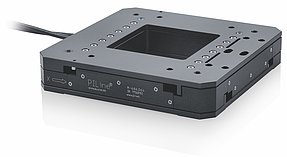
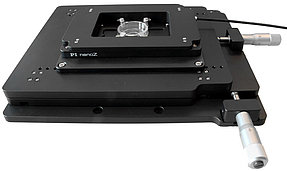
What is a Microscope Stage?
A microscope stage is a crucial component of an optical upright or inverted microscope, which is a device used for magnifying and observing small objects or specimens that are otherwise difficult to see with the naked eye. The microscope stage is a flat platform or surface where the specimen or sample to be examined is placed. It's designed to hold the specimen securely and allow for precise positioning and movement, so that different parts of the specimen can be brought into the field of view for observation. Microscope stages are also used in AFM and electron microscopy, where resolution in the sub-nanometer range may be required.
Microscope stages typically have a set of mechanical controls that enable the user to move the specimen in a controlled and precise manner along both the X and Y axes (horizontal directions). This movement is important for examining different regions of the specimen, navigating through complex structures, and capturing images or data.
In more advanced microscopes, particularly those used for research purposes, the stage might also allow for additional movement along the Z-axis (vertical direction) to enable focusing on different planes of the specimen. This is especially important for obtaining clear images of three-dimensional structures.
Microscope stages can vary in design and complexity. Some basic microscopes might have a simple mechanical stage with manual controls, while others might feature motorized stages that can be controlled electronically, often integrated with imaging software for automated scanning and data collection.
Overall, the microscope stage plays a critical role in facilitating the precise positioning and manipulation of specimens to enable detailed observation and analysis under the microscope.
